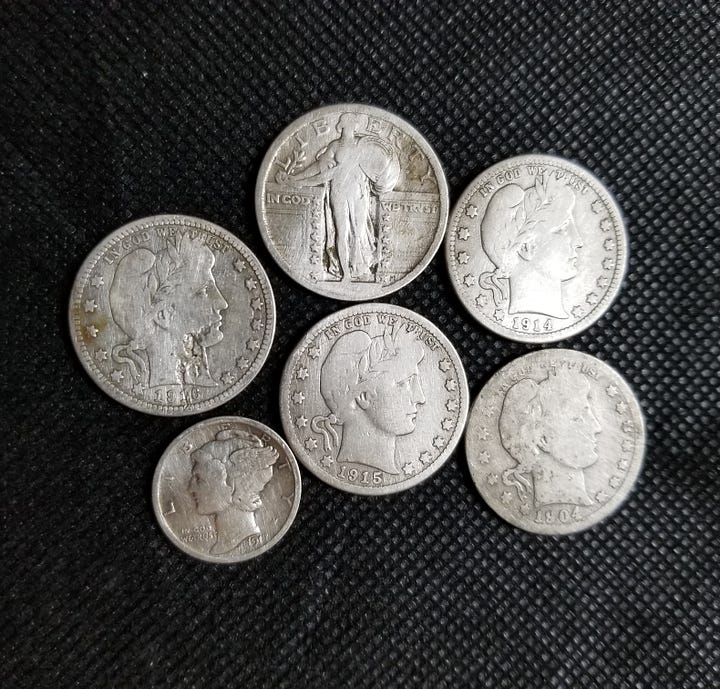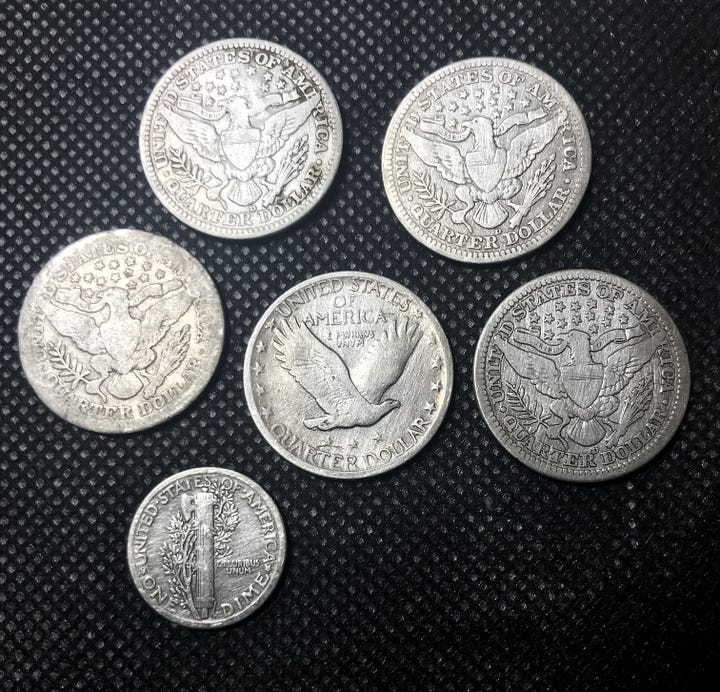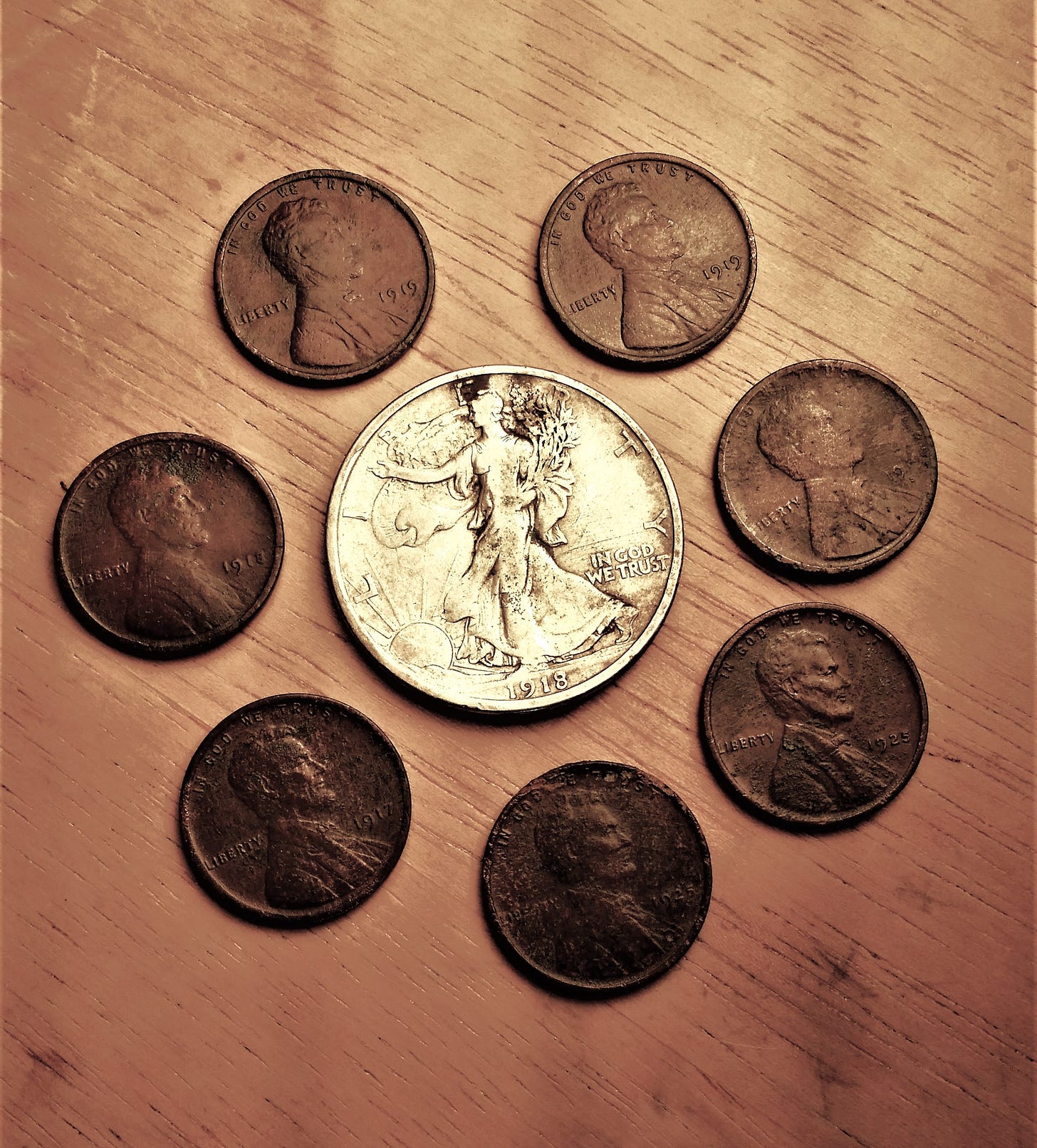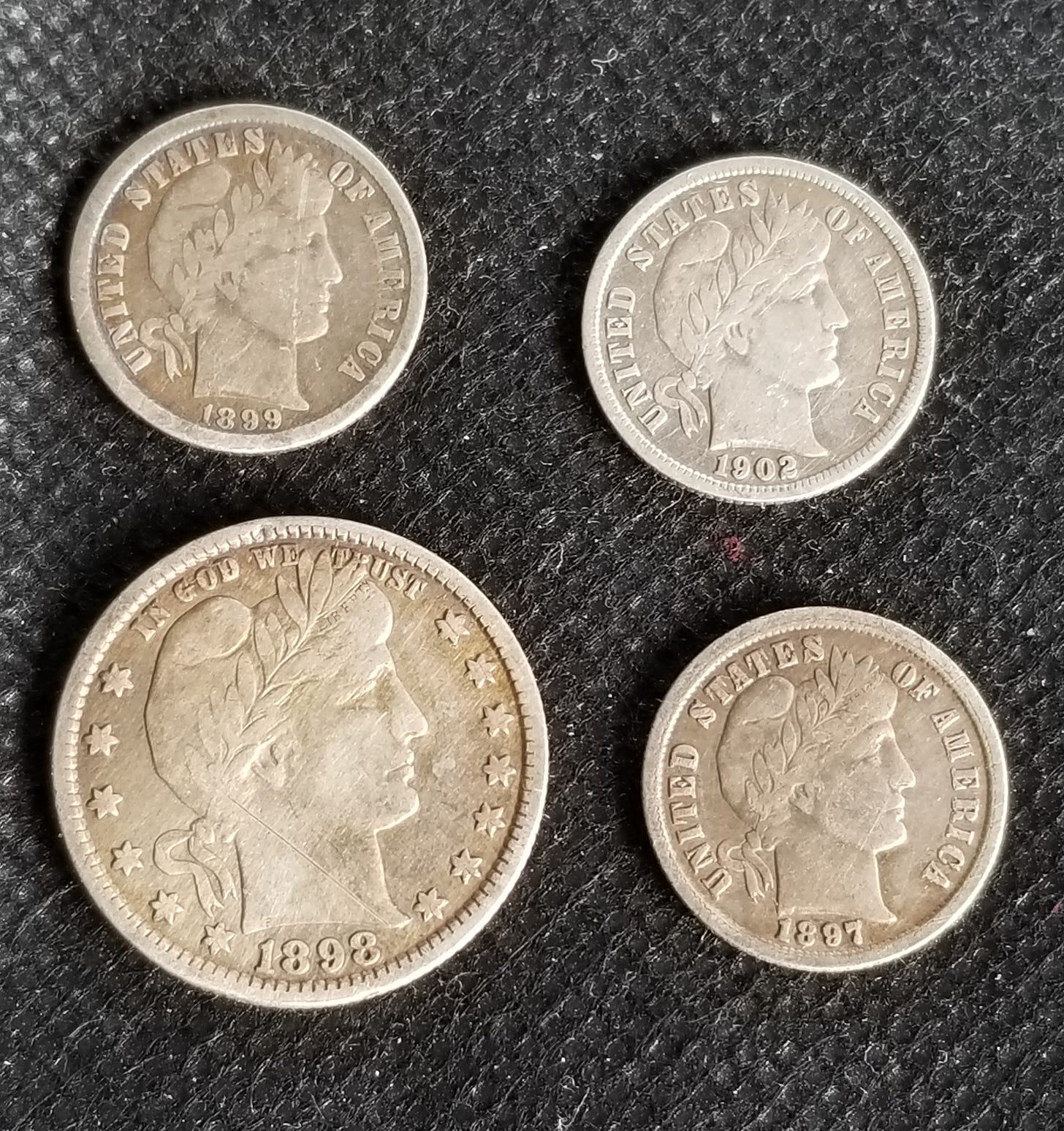In the twelve-plus years that I’ve been detecting I can recall three nice old coin spills. A couple of times I’ve found modern coin spills, but they aren’t included in this blog post. I consider a coin spill to be any area of 6-12 inches or less that contains multiple coins, indicating that someone lost them all at once.
The first old coin spill that I found was on August 28, 2017, and consisted of seven wheat pennies and a Walking Liberty half dollar. This Walking Liberty half dollar was minted in 1918, but the newest penny is a 1925, so this one was at least seven years old when it was lost. The pennies came out in really good condition, which is largely determined by soil composition. Certain soils (presumably acidic, though I’ve never had them tested) really wear a coin down fast. Salt corrodes coins and can cause sand encrustation, so it really matters what kind of environment the coins were in over the years.
The second spill was found on April 19, 2020. I was detecting at another SP when I found a 1901 V nickel, three Barber dimes dated 1899 to 1902, and an 1889 Barber Quarter. Nickels almost never come out of the ground in any kind of decent condition so this one isn’t shown in the photo.
The most recent spill was November 3, 2023, so you can see that they don’t occur often. I thought I’d return to a spot where I’d had good luck in the past, although I worry sometimes that these spots become “hunted out” after dozens of trips. That’s where I found the 1917 Type I Standing Liberty quarter that I wrote about previously. I’ve been there many times over the years and found many nice coins and a few other artifacts. Yesterday, however, I was probably four hours into my hunt without any nice finds, and was making my way back to my car with the intention of calling it a day when I got a good signal from my White’s MXT Pro. I thought it was going to be trash because the signal seemed a little big for anything nice. I thought it would be an old beer can, but decided to dig it anyway. I dug down around four inches, popped the plug, and saw something round in the hole. I figured it was either a button or coin. I picked it up and wiped off the dirt and realized it was a Barber quarter.
There are four rules of metal detecting:
1. Nothing is ever completely hunted out
2. Dig every target, even if you think it’s trash because you could be surprised
3. Always recheck your holes
4. Always fill in your holes
With rule number 3 in mind, I stuck the pinpointer back in the hole and got another hit, which turned out to be another Barber quarter. After rechecking five more times, I had a total of four Barber quarters (1904, 1914D, 1915D, and 1916D), a 1918 Standing Liberty Quarter, an 1898 V nickel (not shown), and a 1917 Mercury dime. It’s really unusual in this part of the country to find so many D mint marks, but I’ll take it! I also find it odd that there were no pennies. A hundred years ago, $1.40 was a good bit of money. I’m guessing somebody let the expletives fly when they realized they’d lost all that money.


All three of these coin spills were found in State Parks. Pennsylvania allows metal detecting in most of its State Parks with a permit. Be sure to inquire as to the rules and what areas might be off limits before detecting State Parks. Some SPs may also require that you turn in all items over a certain age, or with historical interest, so be sure to ask about that as well.




What an exhilarating tale of unexpected discoveries! Your account vividly illustrates the thrill and unpredictability of metal detecting, reminding us all of the importance of perseverance and adherence to the fundamental rules of the craft. Your experience perfectly embodies the essence of rule number two – "Dig every target, even if you think it's trash because you could be surprised." Your determination to investigate every signal led to the remarkable unearthing of multiple Barber quarters, a Standing Liberty Quarter, a Mercury dime, and even an 1898 V nickel, showcasing the rich history hidden beneath the earth's surface.
Moreover, your observation about the absence of pennies and the abundance of D mint marks adds an intriguing layer to your narrative, hinting at the story behind these lost treasures. It's fascinating to ponder the circumstances that led to such a cache of coins being left behind a century ago.
In light of your remarkable finds and dedication to the craft, I'd like to suggest considering the GoldXtra Metal Detector for your future expeditions. With its unparalleled precision and specialized Gold Mode option, designed explicitly for various terrains, the GoldXtra promises to elevate your treasure-hunting experience even further. Its advanced technology ensures unmatched sensitivity and accuracy, making it the ultimate tool for discerning prospectors like yourself. Happy hunting, and may your adventures continue to yield fascinating discoveries! For more information, you can visit http://goldxtra.com/.